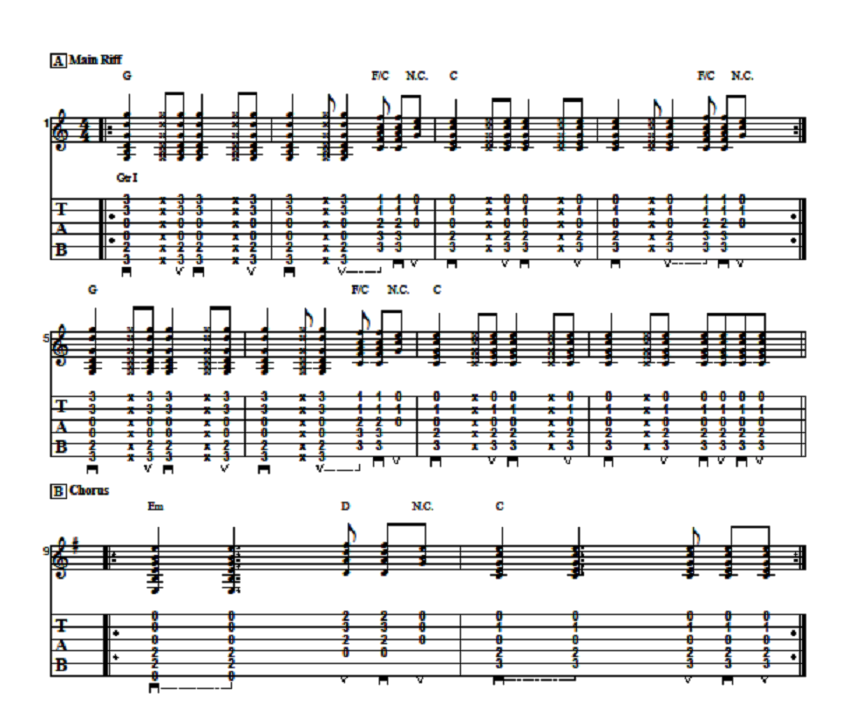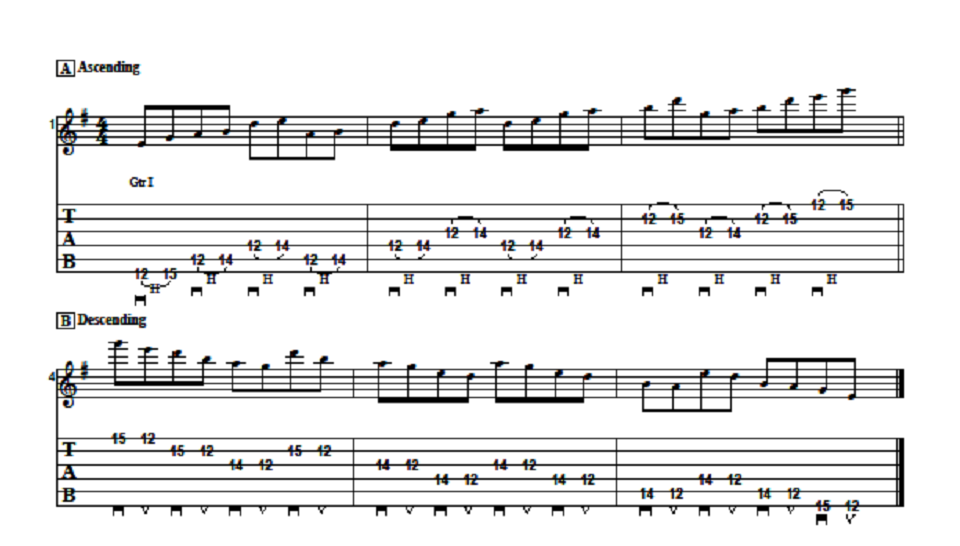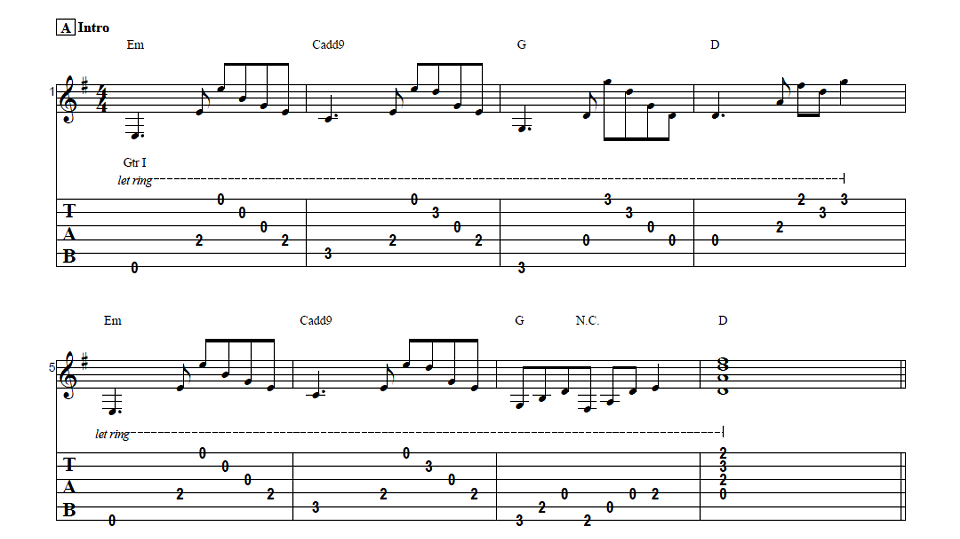Check out this free guitar lesson from Guitar Control instructor Darrin Goodman on How To Play Night Moves By Bob Seger. Be sure to get the free tabs to go along with this How To Play Night Moves By Bob Seger lesson.

Introduction
Hey everybody how’s it going? This is Darrin with GuitarControl.com bringing you this video lesson and today I want to show you How To Play Night Moves By Bob Seger. You’re probably familiar with it and we’re just gonna do kind of a simple acoustic rendition of it. What’s great about this song is that it’s a really good exercise for rhythm and kind of getting away from just really straight forward simple rhythms. Not that this one is really complicated, but just some of the techniques is just gonna kick it up a notch. So be sure to click on the link in the description for the tabs and let’s get close up and take a look at How To Play Night Moves By Bob Seger.
Night Moves Chords
Okay so the first thing for How To Play Night Moves By Bob Seger is to be in the same key as the original song you’re going to need to put a capo on your first fret and then let’s just run through the chords that we’re going to be using for this. So the first chord we have is G. Now since we are using a capo on the first fret it moves everything up one fret; so when I’m saying these frets for playing this chord it’s in reference to the capo. So for example here when I’m playing this G my third finger is actually on the fourth fret, but since we have the capo on the first fret we’re going to call that fourth fret the third fret because from here; one, two, three, so everything is going to be in reference to the capo. So for that G I’m on the third fret of the low E with my second finger, second fret of the A string with my first finger, the D and G strings are open and I’m on the third fret of the B string with my third finger and the third fret of the high E with my fourth finger. Then we have F; so a couple ways we could do F. We could do the full on barre chord or we could do it like this… but I really like this particular voicing here… it’s actually F over C (F/C) because it’s an F chord but we’ve got a C in the bass. So I’m on the third fret of the A string with my third finger and I’m on the third fret of the D string with my fourth finger, second fret of the G string with my second finger and then my first finger is barring the first fret of the second and the first strings and then from there we go to a C. Now what’s nice about this transition and it does it a lot in this song, is that going from that F to C our third finger is already where it needs to be and so is our first finger; so we just simply remove your fourth finger and move your second finger from the second fret of the G string to the second fret of the D string like that… and you want to try to work with moving your pinky and your second finger at the same time so that way you know you can make the transition quicker and also you’re going to be same time rolling that first finger up so instead of barring the first and the second strings we’re just going to roll up so we’re just fretting the first fret of the B string but the high e is open… Then we have an E minor. So we’ve got the low E open, second fret of the A string with my second finger, second fret of the D string with my third finger and all the rest of the strings are open.
Rhythm & Strumming
All right so for How To Play Night Moves By Bob Seger it has this main kind of riff that is the intro and it’s the verses too, it’s like the majority of the song. We start we got the G to F to C, so that’s kind of that riff that just runs back and forth. So for the strum for this it’s… so I’m doing a down stroke and then I’m hitting the strings. Now you don’t hit really hard, so it’s; down, slap, down, up, slap… I guess I’m doing it backwards of what I thought so I’m doing the down stroke, slap, up, down, slap, up, down, slap. Now for you it may be easier and maybe it’ll feel more natural to go; down, slap, down, slap, down, whichever way, it doesn’t really matter… Now when I come down to do that slap that kind of sound is because the strings are bottoming out and hitting the frets, so you still want to be holding your chord… Now we switch to the F and we’re just gonna do… and then it goes to a C… Then from C we go back to the F… So when I switch to the C as I strum those first few strings my first finger is still on the first fret of the B string and then we go to C and it’s the same strum that we did on G back to G… So it just does that quite a bit and that’s the intro and the verse; like I said it’s probably the majority of the song. If nothing else this is a really good exercise for transitioning with those chords because anytime you’re going to and from F it’s always a struggle, especially when you’re a beginner, so this is really good for just working on that and also for that rhythm… So if you’ve never tried to do anything like this before at first it can be a little bit tricky to kind of get that rhythm in there, but just kind of think about it the same way we’ve talked about it before, just to kind of get that swing on there. All right so like I said it’s the intro and then the verse and then that’s what leads into the chorus. So the last time through on that you have a G to F to C… so right there when normally change but now we would just stay on that C…and that’s like the da da da da night moves… Okay I don’t think we went over D at the beginning so really quick; D string is open, I’m on the second fret of the G string with my first finger, third fret of the B string with my third finger and the second fret of the high E with my second finger… so then we go to that E minor. So I’m doing D and I go down and then I just release the strings and hit those first two or three strings and that allows me to change so there isn’t silence between the chord changes. So those are basically the two parts of the song. With this I would practice it just by yourself and really kind of get the feel for it and listen to the original song for reference, especially if you’re not really familiar with it, to really kind of get that rhythm in your mind and then just start playing along with it to get that timing for How To Play Night Moves By Bob Seger.
Conclusion
So if you like the How To Play Night Moves By Bob Seger video give it a thumbs up and leave me a comment down below if there’s something that you like to see covered in a future lesson or if you just have any questions about this lesson or just guitar questions in general; I try to look at all those and answer all the questions that I can. If you have not already done so please subscribe to the channel and click that notification bell so that you don’t miss out any of the content that we upload throughout the week. Alright so that is all I’ve got for you today. Thanks for watching How To Play Night Moves By Bob Seger and have a great day.

